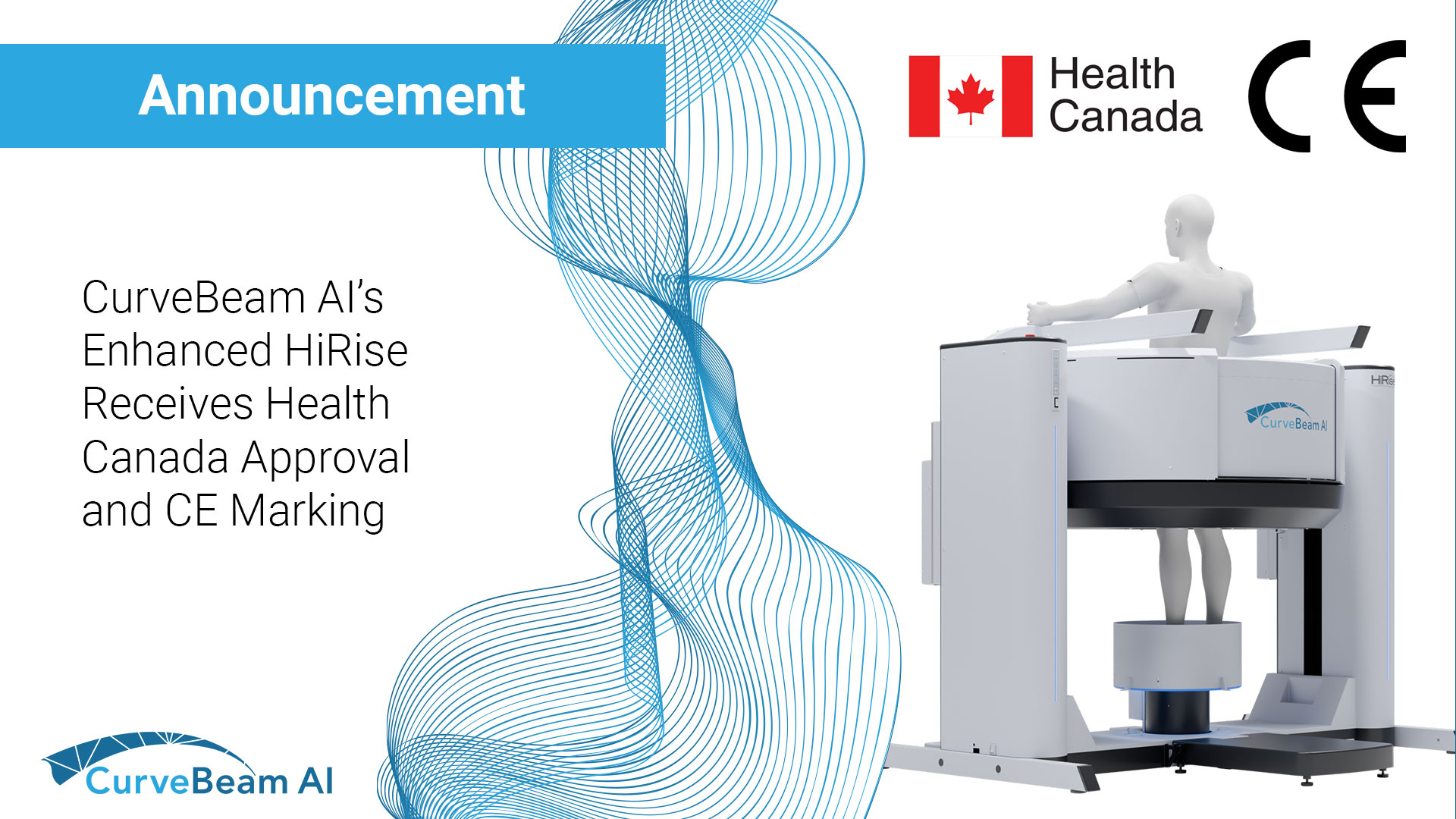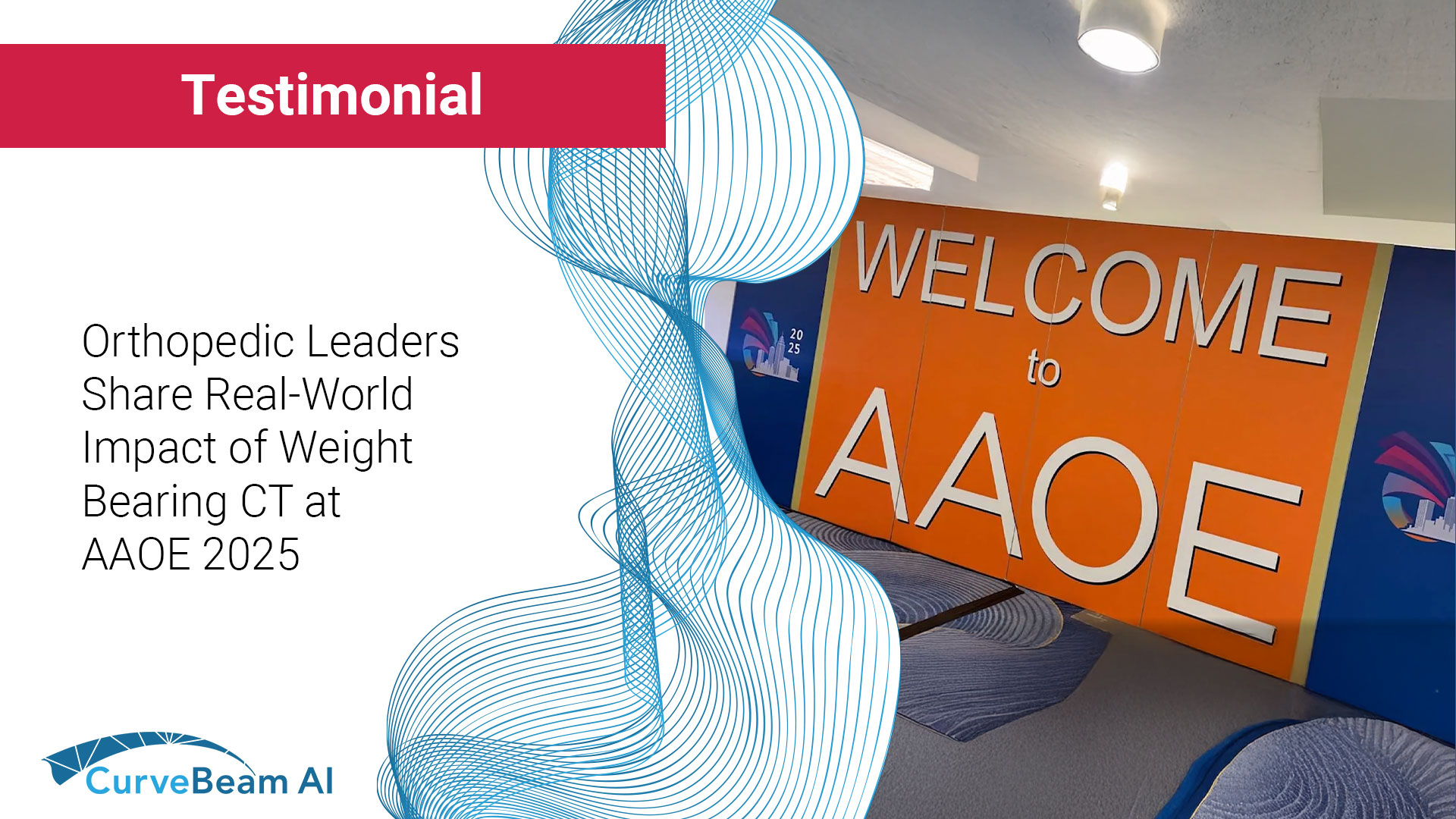Hatfield, PA — July 1, 2025 — CurveBeam AI, a global leader in weight bearing…

i-FAB Awarded to Hindfoot Misalignment Research Study
Hindfoot malalignment is a major cause of pathology in the foot and ankle and impacts the biomechanics of these areas of the body. Standard 2D radiograph measurements are plagued by anatomical and operator bias due to inaccuracies with 2D plane projections. Weight Bearing Computed Tomography (WBCT) and semi-automated 3D measurements of the hindfoot have shown promise for increased accuracy. They do have a critical shortcoming, however; they cannot offer information related to surface-to-surface interactions throughout various parts of the ankle and foot.
Sorin Siegler, Maui Jepsen, and Francois Lintz recently completed a study with the goal of addressing these inadequacies and finding solutions. They applied a 3D biometric tool based on distance mapping, which describes this interaction to WBCT data to characterize the effect of hindfoot valgus and varus deformities. 30 bilateral data sets were obtained, and the images were then processed to create 3D models of the foot and ankle structures. 3D CAD software calculated surface-to-surface interactions at various joints and created color-coded distance maps. The team then compared the images from the deformed feet to those of the normal feet.
With respect to hindfoot valgus, they discovered the antero-medial side of the talus is closer to the medial malleolus as this bone moves into slight external rotation and plantarflexion. The calcaneus is externally rotated relative to the talus, resulting in surface approximations on the lateral side of the posterior articular facet and an impingement of the sinus tarsi. In addition, a strong approximation on the superior side of the calcaneocuboid joint and the lateral side of the talonavicular joint occurs at the Chopart joint. At the cunei-navicular joint, there is a significant approximation of the lateral cuneiform to the navicular. At the metatarsal-cuneiform joints is a strong approximation at the 2nd and 3rd metatarsals joint surfaces.
In hindfoot varus, it was evident that the medial and lateral sides of the talus are closer to their respective malleoli, and anteromedial side of the talar dome approximates the tibial plafond, as the talus moves into inversion and slight dorsiflexion. The calcaneus is internally rotated and inverted relative to the talus, resulting in surface approximations on the medial side of the calcaneus bridging the gap between the posterior and middle articular facet and at the lateral side of the posterior articular facet of the calcaneus. The cuboid is displaced inferior to the navicular resulting in contact on the lateral facet of the calcaneocuboid joint. Also, a strong approximation at the talo-navicular joint can be observed on the medial side. At the cunei-navicular joint, the lateral cuneiform surface is displaced away from the navicular surface compared to normal.
It was concluded that WBCT can provide accurate classification of these foot and ankle deformities. Distance mapping allowed the team to characterize the specific surface-to-surface interactions at the joints and distinguish more readily between the hindfoot deformities. This information can be valuable in understanding certain pathologies associated with hindfoot varus and valgus deformities. In addition, the color-coded distance maps provided an effective method for assessing the effect of hindfoot deformities on articular joint surface interaction in the foot and ankle. The maps also enhance diagnostics, with future applications in evaluating therapy efforts to restore normal alignment.
Not only was this study highly successful in its future applications to diagnosing and treating these deformities, it also was the recipient of the distinguished i-FAB award. The mission of i-FAB, or International Foot and Ankle Biometrics Community, is to improve our understanding of foot and ankle mechanics as it applies to health, disease, and the design, development and evaluation of foot and ankle surgery, and interventions such as footwear and insoles/orthotics.
Learn about CurveBeam’s ongoing commitment to advancing foot and ankle care here.





